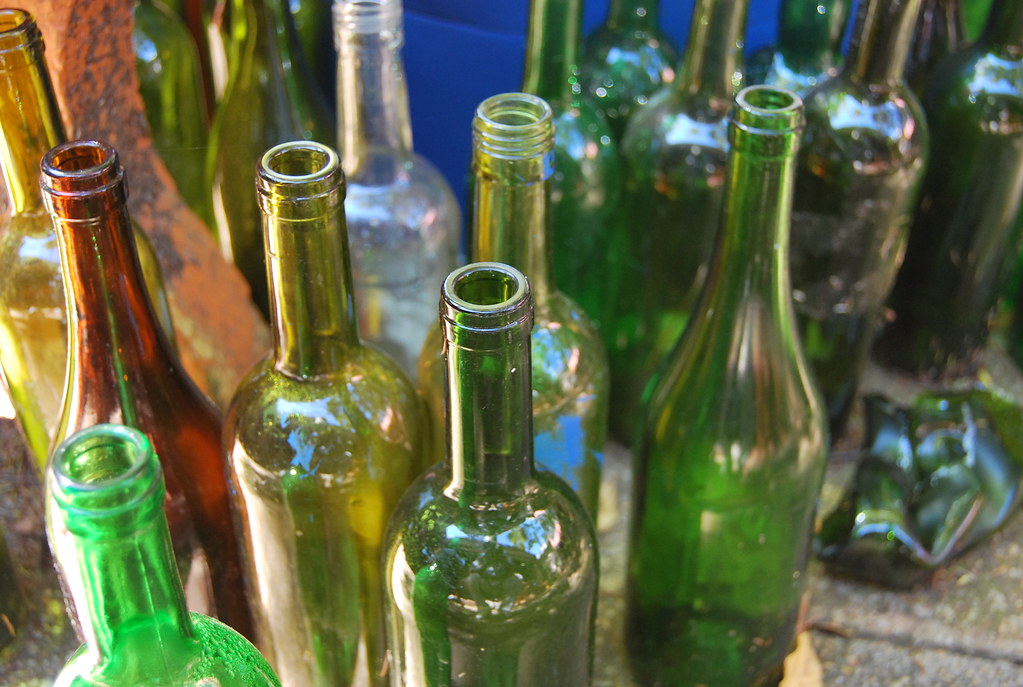Welcome to the third addition in the series of ‘What happens to our…’ This time were going to be talking about glass. Glass production in the 2018/2019 academic year totalled 56.06 tonnes which is the weight of 11 African elephants and was 4% of the total waste created in that year.
Our glass recycling is produced all around campus with more and more catering outlets using glass bottles rather than plastics. Glass can be of any colour, can be a bottle or jar but not any type of glass cookware or drinks glasses. Glass needs to be placed into the glass recycling bins within the bin compounds. These are found in all compounds on campus, with most residential areas also having an internal glass bin/container. I have linked our maps section on our website which shows the external bin compounds for Canterbury and Medway. All bins have signage on which shows that it is a glass recycling bin. It is important to note that the glass does not need to be placed into a bag and should not be placed in with the mixed recycling at Canterbury, however at Medway it is acceptable to add into the mixed recycling (this is due to the quantity difference between the campuses). The glass doesn’t have to be completely washed out, but use common sense and don’t place half a bottle of pasta sauce into the glass recycling bin.
So the glass is in the external euro bins, and our waste contractor Viridor come and collect them. Each external euro bin has a barcode style chip attached which allows the waste vehicle to connect the waste weight of the bin to the location, which is then used to provide the waste weight for every external euro bin on campus. This is essential for Estates to be able to determine areas where the glass production has increased or decreased and so can provide us with target areas that we can work on.
Once the bins have been emptied, the vehicle goes to a transfer site, here the glass recycling is removed from the vehicle and added into a larger transportation truck to then transport the waste to the Materials Recovery Facility (MRF). So once the waste is placed into the larger transportation truck it is mixed in with waste from other organisations.
Our mixed recycling is taken to Crayford Materials Recycling Facility (MRF) where it goes through a conveyor belt system which separates items by magnets, air and vibration first of all and then is hand sorted. All items are cleaned and then are bailed in their material types of then be sold within the industry to create new products from these recycled materials. Glass is broken into different sized chippings so that it can be used in a variety of ways even including into glass again. Here is the link to a video of a Viridor MRF facility where glass is processed at. I also think that this video is also a really good way of explaining the process that the glass goes through.
In our University of Kent Waste Strategy 2018-2021 our target is to increase the reuse rather than the recycling, as we are aiming to work in line with the waste hierarchy of prevention, prepare for reuse, recycling, other recovery and lastly disposal. To find out more look out for our Waste Hierarchy blog post.
Join us next month to find out what happens to our….reuse part 1 (the BHF).
If you have any questions or want to find out more please reach out through our Instagram, twitter or email and there is also lots of information including the A-Z of waste on our webpages.
